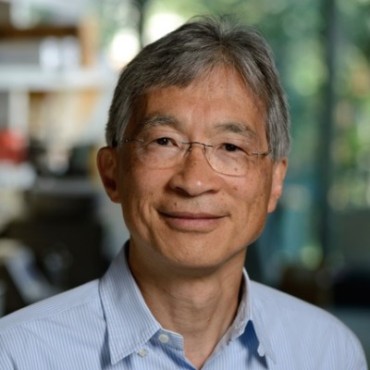
Dr. Carl Wu
387 UTL
Our lab is interested in understanding the structure and function of chromatin, which has a key role in regulating essentially all chromosome activities. We are currently studying the biochemistry of the conserved histone variant, H2A.Z, which is uniquely incorporated at all eukaryotic promoters and enhancers genome-wide, and has an important role in the control of transcription. By elucidating the mechanisms underlying site-specific incorporation of H2A.Z into nucleosomes and the function of nucleosomal H2A.Z in transcription, we hope to acquire general insights on promoter and enhancer function in health and disease. We primarily use the budding yeast model organism because of its efficient molecular genetics and biochemistry, and evolutionary conservation of fundamental mechanisms of gene regulation.
Histone H2A.Z is incorporated into nucleosomes by SWR1, a 14-component, 1-megadalton chromatin remodeler conserved from yeast to humans. SWR1 has two distinct substrates – the canonical nucleosome and the variant H2A.Z-H2B dimer. In the histone exchange reaction, SWR1 mediates ATP-dependent eviction of one nucleosomal histone H2A-H2B dimer coupled with deposition of H2A.Z-H2B, followed by a second histone dimer exchange. Biochemical and structural studies have elucidated how SWR1 captures the H2A.Z-H2B dimer and targets nucleosomes flanking free promoter DNA – both actions primarily through the Swc2/YL1 subunit – but little is known about the molecular mechanism of ATP-dependent histone exchange. To answer this question, we take a multi-disciplinary approach, using the tools of biochemistry, cell and molecular biology, combined with structural biology and single-molecule biophysics. In collaboration with T.J. Ha’s lab, we are developing a single-molecule, real-time fluorescence colocalization and fluorescence resonance energy transfer approach to detect reaction intermediates and measure their lifetimes during histone exchange.
We have also embarked on a new venture using live-cell, single-molecule fluorescence microscopy to image the dynamics of transcription factors and chromatin-based enzymes such as SWR1. The live-cell approach avoids fixation artifacts, measures the movements of single molecules at high spatiotemporal resolution, and should elucidate how different factors gain access to chromatin in vivo. By comparing diffusive parameters between wild-type cells and those exhibiting defects in the epigenetic landscape, we will gain new insights on the role of chromatin organization and dynamics in transcription.
We are additionally interested in the unusual biochemistry of variant nucleosomes at chromosome centromeres. Unlike nucleosome remodeling at gene promoters, nucleosome stability without turnover at centromeres is obligatory for kinetochore assembly during cell division. Yeast centromeres assemble nucleosomes harboring a histone H3 variant called Cse4/ CENP-A. Both Cse4 histone residues and AT-rich centromere DNA composition are important for recruiting CENP-C, a key kinetochore protein, and thus histones and DNA together have a role in centromere specification.
Carl Wu joined Johns Hopkins University in 2016 as Bloomberg Distinguished Professor with appointments in the Department of Biology, and the Department of Molecular Biology and Genetics. He received his Ph.D. in Biology at Harvard University and did post-doctoral work as a Harvard Junior Fellow. He was a Principal Investigator at the National Cancer Institute for 30 years, and a member of the Transcription Imaging Consortium at HHMI-Janelia (2012 – 2016). He is a member of the US National Academy of Sciences, National Academy of Medicine, American Academy of Arts and Sciences, Academia Sinica, and the European Molecular Biology Organization.
